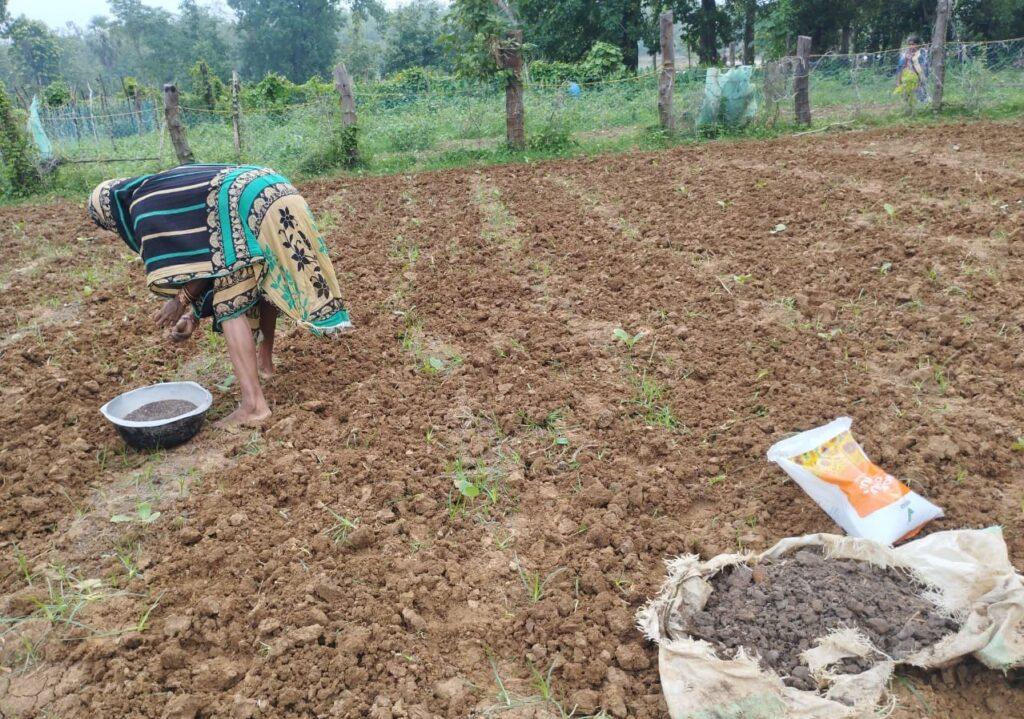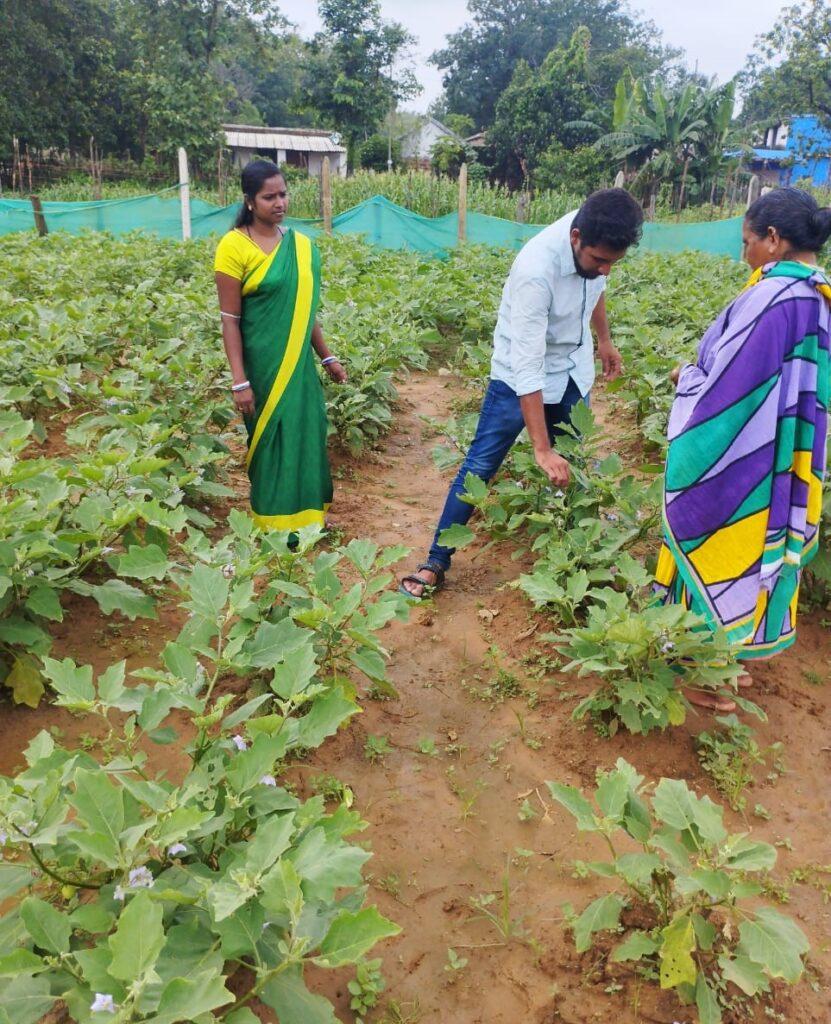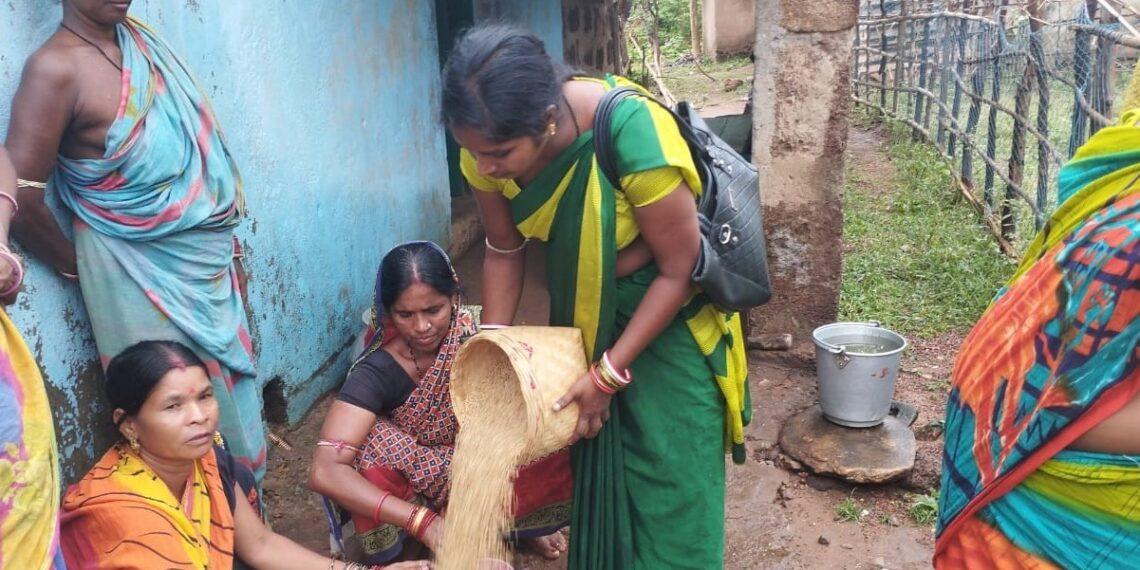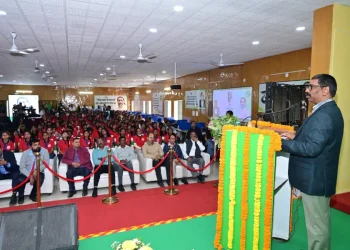Cuttack
Champa Chakia, a Gond tribal woman in Chatkumbh village under Gondia block of Dhenkanal, Odisha, waits for a bumper harvest of brinjals from her six gunths (a little over 607 square feet of land). She hopes that use of organic ‘nimastra’ and ‘agneyastra’ in her land would not only pose a bulwark against pest attack, but also boost vegetable production to fetch over Rs. 15 000 from village haat (market).
Her expectation is not a fantasy, as she has already experienced the benefits of ‘nimastra’ and ‘agneyastra’. Output of bitter gourds, tomatoes and brinjals in December, 2022 , earned over Rs. 12,000 for her—the result of the use of the twin organic pest controllers and fertilisers. This time, she has replayed the success story that, she hopes, would increase brinjal production to fetch her over Rs. 15000.
Earlier, she too had cultivated vegetables, but the result had been dismal, because pests had reduced the plants’ fecundity drastically. However, post-December following the use of ‘nimastra’ and ‘agneyastra’, she expects a rosier year.

“I used ‘nimastra’ and ‘agneyastra’ as per the advice of the people of Dhenkanal unit of Bhubaneswar-based Foundation for Ecological Security (FES), Krushaka Sathis of the Agriculture Department and Krishi Mitras of Mission Shakti Department of the block,” said Champa.
FES, in coordination with block agriculture department, introduced ‘nimastra’ and ‘agneyastra’ in 65 villages under 11 panchayats of four blocks in Dhenkanal. The NGO, with the support of 27 Krushi Mitras and 22 Krushak Sathis, in the blocks is persuading about 2,200 farmers in the villages to replace chemicalized pesticide and insecticide with ‘nimastra’ and ‘agneyastra’.
“Chemicalized pesticide and fertilizers, harmful to both plants and humans, help plants’ yield, but impair soil’s fertility. But use of ‘nimastra’ and ‘agneyastra’ enhances soil’s fertility, and mars pest proliferation,” Kankadahada block agriculture officer Kartik Swain explained to The Indian Tribal.
Farmer Malha Soren, a Santhali tribal of Kantapal village, concurred with this view. “The vegetable from my 0.5 acre of land would definitely fetch me over Rs. 12,000 from the village haat. And it is only due to the magic of ‘nimastra’ and ‘agneyastra’. Beside me, five farmers of our community in my village, hope to reap rich dividends from their vegetables cultivation,” he said jubilantly.
“FES had prepared the twin organic weapons after consulting with agriculture scientists, and old farmers who inherited the knowledge of preparing similar indigenous methods from their forefathers,” according to FES district coordinator Pranab Nayak, who has over 15 years of experience in organic farming.
Five kilograms of neem leaves is ground into paste to be mixed with 100 litres of water, five litres of bovine urine and two kilograms of fresh cow dung. The mix is stirred with a club twice a day for thorough absorption of its ingredients’ properties. Then it is kept in a shade and left for 48 hours. Subsequently, it is filtered to become one dose of ‘nimastra’.
“Nimastra ought to be sprayed on plants within two days of its preparation. One dose of it is enough for plants in one acre,” Pranab said.
Similarly, agneyastra is prepared out of five kilogram of neem leaves, 20 litres of bovine urine, 500 grams of tobacco (dhuan patra in Odia), 500 grams of green chilies and 250 grams of garlic. Green chilies, tobacco, garlic and neem leaves are separately ground into pastes that are poured one after the other into an earthen pot already filled with fresh bovine urine.
The mix in the pot is left for 24 hours. Then it is boiled for five times, leaving an interval of 10 to 15 minutes in between. When it is over, the pot is then kept in a shade and left for 48 hours to cool down before the mix that is later filtered for agenyastra to come out.

“Five litres of agneyastra mixed with 200 litres of water are sprayed twice (morning and evening) over plants when they are bearing flowers and fruits. However, it can be sprinkled over vegetable plants once a day for 21 days before they start growing. If the pest attack is severe agneyastra is sprinkled once a day for 10 days. This process is most effective against pests like ‘kanda bindha poka’ and ‘soshoka poka’,” said Pranab.
While cow dung and bovine urine not only act as rich fertiliser, they also prove antibacterial and insect repellent besides being a natural disinfectant, according to scientist Dr. Bansidhar Pradhan, the former head of department of plant breeding and genetics department of Odisha University of Agriculture and Technology (OUAT), Bhubaneswar. “Tobacco renders the pest immobile and kills its hunger,” he told The Indian Tribal.
Similarly, OUAT’s former head of department of entomology Dr. Hariprasad Mishra conceded that the mix of green chili and ginger acts as insecticide particularly against larva caterpillars of pests.
Krushi Mitra Padmavati Mitra of Kantapala under Kankadahada block shared that she used both ‘nimastra’ and ‘agneyastra’ in her own half an acre and experienced their full results, before mobilising others to use them.
“Before persuading villagers, we show the efficacy of nimastra and agneyastra in our fields to prove our point,” said Padmavati.
“If soil has been heavily dosed with chemical pesticide and fertilizer, nimastra and agneyastra take about three years to show results,” said Gyanaranjan Sahu, one of the four FES’s master trainers who teach preparation methods of nimastra and agneyastra to farmers besides sort out their problems.























